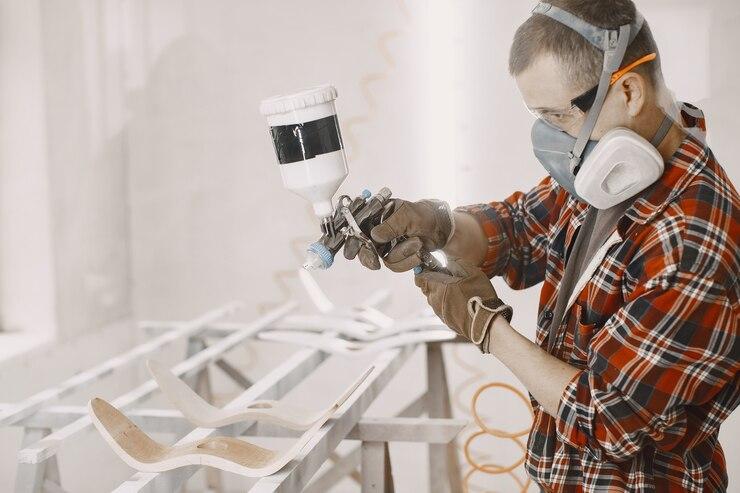Notifications

3 minutes, 52 seconds
-211 Views 0 Comments 0 Likes 0 Reviews

When it comes to revamping and protecting your walls, furniture, or exterior surfaces, two modern painting techniques stand out for their effectiveness and versatility: Spray Painting and waterproof painting. These methods not only enhance the visual appeal of surfaces but also provide lasting protection against weather and wear. Whether you’re a DIY enthusiast or a professional contractor, understanding the benefits and applications of these painting techniques can lead to a superior finish and long-term durability.
Spray painting is a technique where paint is applied using a spraying device, offering a smooth, even coat that brushes and rollers often struggle to achieve. This method is ideal for covering large areas quickly and efficiently, making it popular in both residential and commercial projects.
From furniture to fences and even vehicles, spray painting provides a flawless finish with minimal effort. It's especially useful for intricate surfaces where brush strokes might leave uneven textures. Additionally, spray systems allow for better control of the paint application, reducing waste and ensuring a more consistent look.
The key advantages of spray painting include:
Speed and efficiency
Uniform coverage
Ability to reach nooks and crannies
Smooth, professional-looking finish
However, it's essential to prepare the area properly, use appropriate safety gear, and work in a well-ventilated space to avoid inhaling fumes and to prevent overspray on unintended surfaces.
While aesthetics are important, durability is critical—especially in regions prone to rain, humidity, or moisture exposure. That’s where waterproof painting comes into play. Designed to create a protective barrier against water penetration, waterproof painting is essential for surfaces like exterior walls, bathrooms, basements, and rooftops.
This technique involves using specially formulated paints that resist water, prevent mold growth, and protect against cracking or peeling caused by moisture. By sealing surfaces with waterproof painting, you extend the life of your property and reduce long-term maintenance costs.
Some benefits of waterproof painting include:
Moisture resistance
Mold and mildew prevention
Enhanced structural integrity
UV and weather protection
Whether you're safeguarding a new building or restoring an old one, waterproof painting offers peace of mind and added property value.
In conclusion, combining the precision and elegance of spray painting with the protective qualities of waterproof painting can significantly elevate both the function and appearance of your surfaces. While spray painting brings speed and a flawless finish, waterproof painting ensures your projects withstand the test of time and elements.
For homeowners, builders, and decorators alike, these two painting methods are essential tools in achieving professional results. Whether you're tackling an interior makeover or preparing a structure to endure the outdoors, investing in spray painting and waterproof painting techniques will ensure beauty and durability for years to come.

